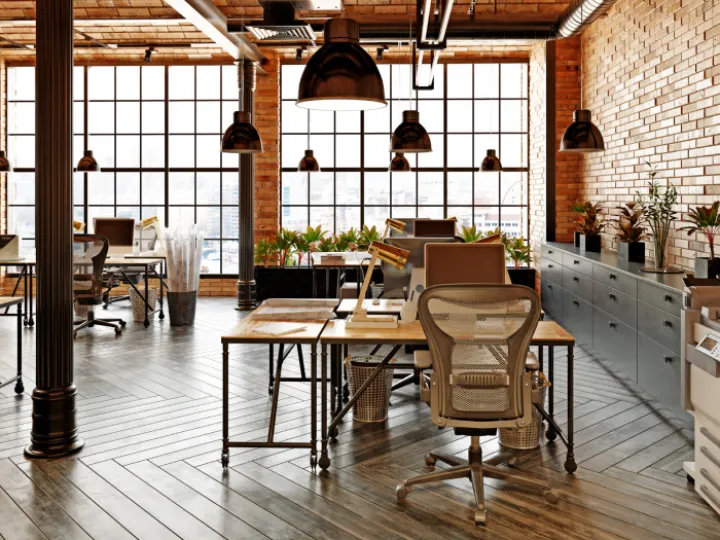Productivity Through Office Design
Commercial Design Boosts Productivity
The UK office environment is often described as a rather drab affair: grey partitions, fluorescent lighting, and an over-reliance on uniformity. But as work culture shifts, driven by technological advancements and changes in employee expectations, so too does our physical workspace. The modern office is no longer a place to get work done; it is now seen as a strategic asset in attracting talent, supporting well-being, and boosting overall productivity.
From open-plan layouts that foster collaboration to modular designs that enable flexibility, UK businesses are recognising that the design of their interiors matters. According to the British Council for Offices, adaptable and human-centric workspaces are key to future-proofing commercial interiors. Firms investing in design are reporting improvements not only in productivity but also in staff retention and brand perception.
The psychology behind office productivity
Productivity doesn't just come from processes; it's rooted in psychology. Research from the Chartered Institute of Personnel and Development (CIPD) underscores how elements such as lighting, acoustics, and spatial configuration directly affect cognitive performance and emotional well-being. Designers now incorporate evidence from behavioural science to optimise workplace layouts.
Natural light exposure, for instance, regulates circadian rhythms and reduces fatigue. Acoustic zoning helps minimise distractions in open-plan offices, where noise pollution can inhibit focus. https://en.wikipedia.org/wiki/Biophilic_design.11 (Biophilic design), which integrates natural elements like plants and textures, has also become popular, thanks to its ability to reduce stress and enhance creative thinking. In short, design isn't just aesthetic; it's deeply functional, backed by neuroscientific research.
Smarter spaces for smarter work
The smart office is fast becoming a reality, and interior design is stepping up to accommodate it. From IoT-enabled lighting systems to AI-powered climate control, commercial interiors are increasingly serving as the infrastructure for digital innovation. This seamless integration of technical know-how with design creativity isn't just about gadgets; it's about creating environments that respond to how people work.
Sensors can track space utilisation, informing real-time changes in layout and helping facilities managers reduce energy consumption. Wireless charging stations, adaptive meeting pods, and AR-supported planning tools were once fringe features in office design; they're now becoming standard. The emphasis is on user experience and fluidity, making tech-enhanced environments intuitive, productive, and future-ready.
Sustainability and the modern workplace
Until recently, sustainability in interior design was just a buzzword; it's now a fact becoming mainstream. As Britain moves toward its net-zero targets, businesses are expected to play their part by reducing their carbon footprints in all areas, including office design. Commercial fit-outs are increasingly embracing circular economy principles, using recycled materials, low-VOC paints, and energy-efficient systems.
Green certifications such as Building Research Establishment Environmental Assessment Method (BREEAM) now influence design decisions at all levels. But beyond compliance, sustainable design fosters corporate responsibility and employee stickability. A sustainable office layout can benefit both the environment and your employees.
The financial case for interior investment
Investing in commercial interior design isn't just a nice-to-have; it's a strategic decision that delivers measurable returns. A study by Leesman Index , which audits workplace effectiveness, found that high-performing workplaces can increase employee productivity by up to 20%. Multiply that by workforce size, and the bottom-line impact is hard to ignore.
Cost savings also emerge through better space utilisation, reduced absenteeism, and higher retention rates. In the UK, where office rents are high, innovative design can ensure that every square foot delivers the best value possible. Whether it's hot-desking, providing quiet places, or space planning, the return on investment is computable. Businesses that ignore this shift risk falling behind in both efficiency and employee satisfaction.
Design as strategic infrastructure
Commercial interior design has graduated from superficial décor to strategic infrastructure. In the UK's evolving corporate landscape, where hybrid working and mental well-being sit front and centre, the office must work harder than ever. It's a canvas for culture, innovation, and operational excellence.
And when designed intelligently, it becomes a silent partner in your organisation's success, boosting productivity not just through aesthetics, but through function, purpose, and vision.

